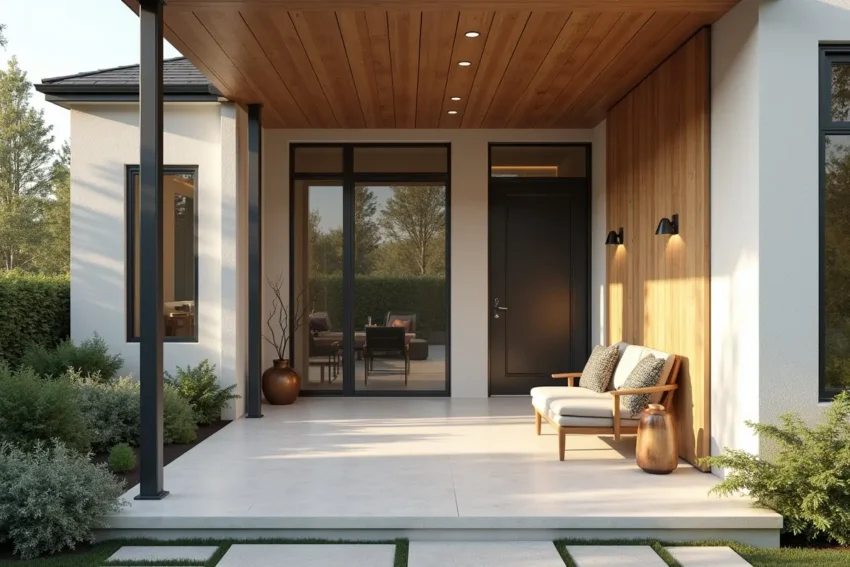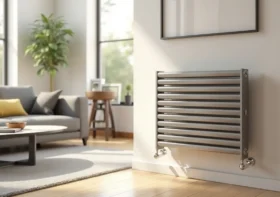Adapting Classic Porch Designs for Contemporary Living

Porches have returned as a central feature in modern home design, but with an entirely new purpose. Once seen mainly as entryways or quiet resting spots, they’ve evolved into flexible living zones where style, comfort, and practicality come together. Homeowners now see their porches as an extension of everyday life; a place for morning coffee, late-night work sessions, or family dinners under open skies.
Today’s porch design is about adapting tradition to fit current lifestyles. Choices in materials, lighting, and layout are more deliberate, aiming to create outdoor areas that feel permanent, cozy, and naturally connected to the home. Whether it’s adding warmth, expanding square footage, or introducing subtle design details, modern porches combine familiar comfort with updated design thinking.
Contents
Modern Comfort Upgrades
Comfort has become the starting point for any successful porch redesign. The focus now lies on creating spaces that invite people to linger. Homeowners are investing in weather-resistant furniture, soft fabrics, and thoughtful layouts that encourage relaxation. A well-planned porch layout considers seating zones, sightlines, and easy flow between indoors and outdoors. Simple touches like layered rugs or ceiling fans also make a big impact on usability.
Similarly, a fireplace for screened in porch areas brings both charm and practicality. It provides steady warmth and turns a seasonal porch into a year-round gathering space. However, installation isn’t a simple DIY task. Expert help is crucial for safe design, ventilation planning, and compliance with local codes. Professionals understand how to integrate heat sources into screened areas without risking structural or safety issues.
Open-Air Extensions
Open-air extensions have become one of the most effective ways to make homes feel larger without major construction. These spaces create a natural bridge between indoor and outdoor areas, keeping airflow and light at the center of the design. Homeowners can dine, entertain, or unwind in a setting that feels open but still private.
Using durable decking materials, reinforced screening, and smartly placed furniture keeps the layout versatile. Folding doors and large windows further connect the indoors with the outside world. The key is to maintain a sense of openness. An open-air extension makes the home feel expansive and connected to nature without losing comfort or convenience.
Year-Round Wraparounds
Wraparound porches have always had a nostalgic quality, but their purpose has expanded. Homeowners now design them for all-season use, giving the structure a new sense of practicality. With insulated flooring, heavy-duty screening, and retractable panels, these porches easily transition between warm and cool months.
Layering furniture for different times of the year adds to its charm. A combination of plush seating, throw blankets, and adjustable lighting makes the space functional for both quiet mornings and evening gatherings.
Metal Framing Accents
The use of custom steel or aluminum trims is one of the strongest ways to modernize a classic porch. These materials frame the structure with clean lines and a sleek appearance that suits both traditional and contemporary architecture. Metal accents add visual clarity and structural stability while withstanding weather far better than wood in certain climates.
Designers now use these trims around railings, columns, and roof edges to create subtle definition. When paired with natural wood or stone textures, metal brings balance to the overall look.
Curved Layouts
Curved layouts have found their place in modern porch design as homeowners look for softer, more fluid shapes. Traditional rectangular structures are being replaced or expanded with rounded corners and circular seating zones that invite conversation.
Gentle curves can be applied to everything from steps to railings. Even details, like rounded furniture or arched ceilings, help soften the overall aesthetic. The design feels approachable, modern, and well-suited to both city and country homes.
Colorful Ceilings
Porch ceilings have become a new focal point for adding personality. Instead of sticking to traditional white or beige, homeowners are experimenting with light blues, greens, or warm terracotta tones to bring subtle energy to the space.
A well-painted ceiling draws the eye upward and can make a smaller porch appear larger. When paired with accent lighting or exposed wood beams, it transforms into a design feature that feels intentional and stylish. Color choices now help define the mood: soft tones for calm, warm ones for energy, all while maintaining a refined, cohesive look.
Layered Lighting
Lighting has become essential to how porches function at night. Layering different sources, like overhead lights, sconces, and low-level floor lighting, creates balance and flexibility. The right mix helps set the tone for reading, dining, or evening gatherings. Lighting design now focuses on subtlety and atmosphere rather than brightness alone.
Smart lighting controls make managing outdoor light simple. Homeowners can adjust settings with mobile apps, dimming or brightening the space as needed.
Minimalist Décor
Minimalist décor gives porches a balanced, clean feel that works well with both old and new architecture. The focus stays on form and function with fewer objects, clear lines, and simple color palettes. This design style creates a calm setting without clutter and lets the porch’s structure and natural surroundings stand out. Choosing furniture with subtle shapes and neutral tones keeps the area visually open and easy to maintain.
Adding character through small details like matte finishes, planters, or textured fabrics makes the space feel complete without overwhelming it. Each piece should have a purpose, whether it’s seating, storage, or visual interest.
Modular Extensions
Modular design is changing how homeowners think about porch upgrades. Instead of rebuilding from scratch, they add flexible, pre-constructed sections that can evolve with their needs. These pieces might serve as extra seating zones, reading corners, or screened sections for privacy. The approach keeps projects efficient and adaptable, allowing spaces to grow or shift over time.
Lightweight materials and modular flooring systems make installation simple while keeping the look cohesive with the existing porch.
Outdoor Kitchens
Outdoor kitchens have turned porches into social hubs. Compact cooking areas, beverage counters, and small sinks make it easy to prepare food and entertain without leaving the gathering. This setup turns the porch into a space where cooking, eating, and relaxing all happen naturally together. It also makes daily life simpler, as meals can move seamlessly between indoor and outdoor spaces.
Designing a porch kitchen requires smart planning. Weatherproof materials, efficient ventilation, and reliable electrical connections are essential. Expert installation helps maintain safety and longevity. When done correctly, the porch kitchen becomes an effortless extension of the home.
Porch design has shifted from simple outdoor seating to a full expression of modern living. Small details like color, lighting, and structure now define how inviting and practical a porch feels throughout the year. When expert input and smart materials guide the process, the result is a porch that fits today’s lifestyle while keeping the warmth and character that have always made this space a favorite part of the home.



